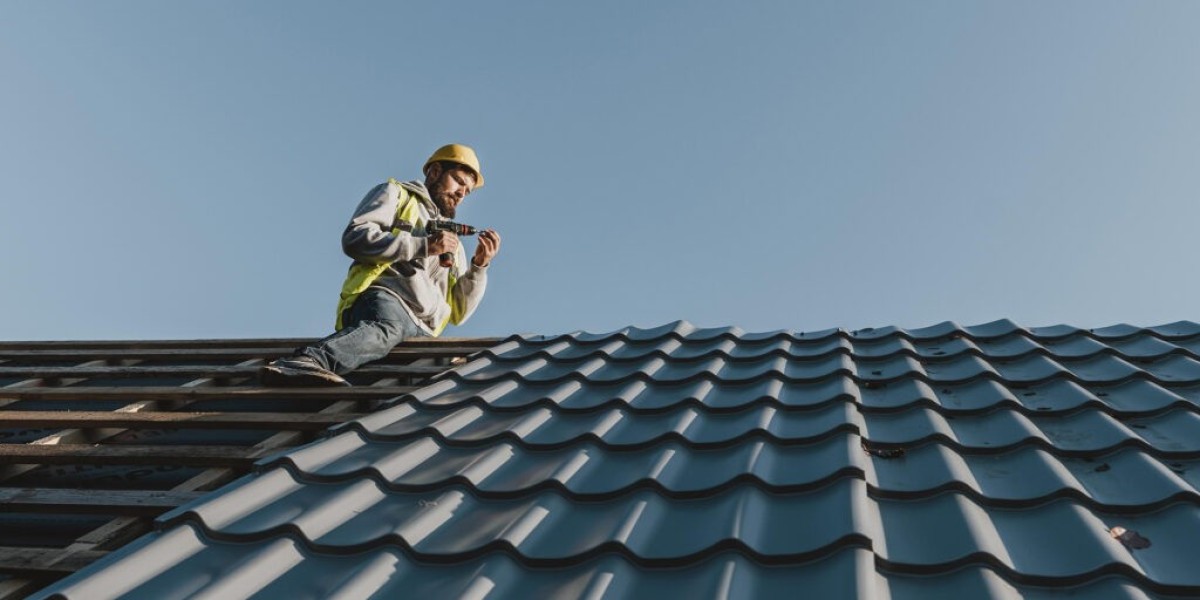When a severe storm strikes, it can leave your home or property severely compromised, with destruction ranging from minor leaks to significant structural damage. The impact of nature’s fury often leaves homeowners grappling with the aftermath, unsure of how to restore their homes to their previous state. While DIY fixes may seem tempting, relying on expert storm damage repair is essential to ensuring a thorough and professional recovery.
This article takes a closer look at the different types of damage caused by storms, why it's crucial to repair the damage promptly, and how professional restoration services can help ensure a safer, more secure living environment for you and your family.
Common Types of Storm-Related Damage
Each storm is unique, and the damage it causes depends on various factors such as wind speed, rainfall, or hail. Here are some of the most common types of damage that storm repair services address:
1. Roofing Damage: Shingles, Leaks, and Structural Failures
A storm’s forceful winds and torrential rains can wreak havoc on your roof. Shingles may be torn off, leaving your home vulnerable to further water damage. Additionally, high winds can lift or collapse roof sections, allowing water to enter the home, potentially damaging ceilings, walls, and floors.
Professional storm restoration services specialize in inspecting and repairing roofs after severe weather, replacing lost or damaged shingles, sealing leaks, and strengthening the roof’s structure. In extreme cases, entire roof replacement may be required to ensure the safety and protection of your home.
2. Water Damage and Flooding
Heavy rains often lead to flooding, causing significant water damage inside the home. Water can seep through cracks in the foundation, break windows, or flow through open gaps in the roof or siding, leading to a flooded interior. If left untreated, this moisture can foster mold and mildew growth, which can cause further damage to the structure and pose health risks.
Storm restoration services focus on removing excess water, drying out affected areas, and restoring water-damaged surfaces. Their specialized equipment ensures that your home is thoroughly dried to prevent mold growth and future water damage.
3. Siding and Exterior Damage
Strong winds, flying debris, or hail can damage the siding on your home, leaving it vulnerable to the elements. Broken or cracked siding can lead to reduced energy efficiency and possible moisture infiltration. Damaged windows may also create security risks and expose your home to further debris.
Storm damage restoration professionals can replace or repair damaged siding, install new windows, and make sure your home’s exterior is fully restored to maintain structural integrity and energy efficiency.
4. Tree and Debris Damage
Fallen trees and large branches can cause significant damage to both your home’s exterior and your landscaping. Trees may fall onto roofs, fences, or driveways, causing immediate destruction and blocking access. Additionally, large limbs can obstruct gutters, pathways, and drainage systems, exacerbating water damage.
Storm repair services handle the removal of fallen trees and debris and assess any structural damage they may have caused. Once the debris is cleared, restoration specialists will address any landscaping or structural issues that need attention.
5. Foundation and Structural Issues
The foundation of your home is one of its most important components, and storm damage can compromise its stability. Flooding, shifting soil, or erosion caused by heavy rains can cause cracks in the foundation, allowing water to seep in and further damage the structure.
Experts in storm damage restoration will carefully inspect the foundation and other structural elements, making necessary repairs to restore the strength and stability of your home. Foundation repairs may involve sealing cracks, reinforcing walls, or addressing drainage issues that could lead to further damage.
Why Quick Restoration is Crucial
After a storm, it's essential to take immediate action to prevent further damage. Here are some reasons why timely storm damage restoration is so important:
1. Prevent Further Deterioration
Delaying repairs can lead to worsening conditions. For instance, a small leak in the roof can quickly escalate into extensive water damage, or a broken window can allow more debris and rain to enter. By acting quickly, you prevent the damage from spreading and minimize the cost of repairs.
2. Mitigate Mold and Mildew Growth
Excess moisture left unchecked can promote mold growth within a matter of days, which can lead to serious health issues. Mold can spread throughout your home, damaging walls, floors, and even the air quality. Fast storm damage restoration ensures that water is removed promptly, reducing the likelihood of mold and mildew taking root.
3. Preserve Your Home’s Value
When you fail to repair storm damage quickly, it can lead to significant issues down the road. Foundation problems, water damage, and mold issues can all devalue your property and make it harder to sell. Timely restoration services not only preserve your home’s value but also improve its long-term condition.
4. Insurance Compliance and Protection
Most home insurance policies require homeowners to act quickly after a storm to mitigate damage. Failing to take the necessary steps can result in reduced coverage or denied claims. Storm damage restoration specialists can work with your insurance company to ensure that all necessary repairs are documented and covered by your policy.
5. Ensure Safety for You and Your Family
Storms can create dangerous conditions, such as exposed wires, shattered windows, and weakened structures. By calling in a professional storm restoration service, you ensure that these hazards are properly addressed, making your home safe to return to and live in.
The Process of Storm Damage Restoration
Once you've contacted a storm restoration service, the following steps typically outline the repair process:
1. Damage Assessment and Inspection
The first step is a thorough inspection of the property to assess the extent of the storm damage. Restoration professionals will evaluate roofing, siding, windows, foundation, and any interior water damage to create a comprehensive plan for repairs.
2. Emergency Temporary Fixes
In the immediate aftermath, temporary measures may be taken to prevent further damage. This could involve placing tarps on the roof, boarding up broken windows, or using pumps to remove standing water. These actions help minimize ongoing issues while waiting for the full restoration process to begin.
3. Water Removal and Drying
If water damage has occurred, professional restoration services will use industrial-grade pumps and dehumidifiers to extract water and dry out affected areas. Thorough drying is essential to prevent mold growth and preserve the structural integrity of the home.
4. Repairs and Restoration
Once the property has been dried, repairs will begin. This includes fixing roofs, windows, and siding, as well as addressing structural issues. Whether it's replacing roofing materials, installing new windows, or reinforcing the foundation, the goal is to restore the home to a safe, secure condition.
5. Final Cleanup and Inspection
Once repairs are completed, a final inspection is conducted to ensure everything is in proper working order. The site is cleaned of any remaining debris, and the home is thoroughly inspected to confirm the restoration is complete.
Why Professional Storm Restoration Services are Essential
Choosing professional storm damage repair services offers several key advantages:
Experience and Expertise: Restoration experts are trained to handle all types of storm damage, ensuring the best possible repair solutions.
Advanced Equipment: Professionals use specialized equipment for water extraction, drying, and mold remediation, which allows for faster and more effective restoration.
Safety: Storm-damaged homes can be hazardous. Professionals know how to safely handle dangerous situations, including structural instability and electrical issues.
Insurance Support: Storm damage restoration companies can assist with insurance claims, ensuring that you receive the full compensation you are entitled to.
Conclusion
Storms can be devastating, but with swift and professional storm damage restoration, your home can be quickly returned to its original condition. Whether dealing with roofing issues, water damage, or structural concerns, relying on experienced professionals ensures that the restoration process is done correctly and safely.
By addressing the damage promptly, you can minimize further deterioration, protect your home’s value, and avoid health risks associated with water damage and mold growth. If your home has suffered from storm damage, don’t wait—contact a trusted storm restoration expert today and get your home back to its pre-storm condition.
This version of the article incorporates different wording while still covering the essential points related to storm damage repair. Let me know if you need any other changes!








